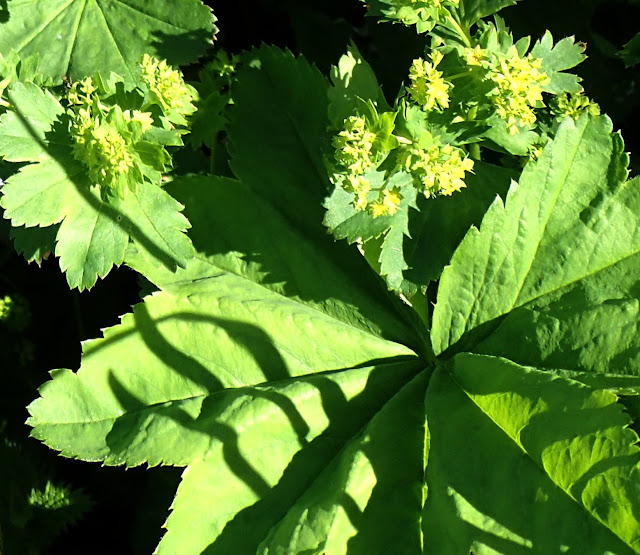Lady's-mantles - There are 15 species of Lady's-mantle in Stace (1991) and maybe more in a newer edition.
Lady's-mantles are apomictic - producing seed wholly female in origin without fertilization,
What do you think it is that makes Dales Hay Meadows special?
It is a sign that a a Dales Hay Meadow is species rich and that it has traditional plants if it has one or several species of Lady's-mantle. (excluding the big hairy garden escape - Garden Lady's-mantle Alchemilla mollis)
In the "National Vegetation Classification" there are many different types of neutral grassland. They are all called MG.. something with a number. One of them is "MG3". This type is often referred to as "Dales Hay Meadow Grassland" . It is the presence of one or several species of wild Lady's-mantles that is one characteristic feature of such grasslands.
The commonest ones around Settle are
Alchemilla glabra
Alchemilla xanthochlora
Alchemilla filicaulis ssp vestita
(and the easily recognisable Alchemilla glaucescens with its silky hairs on the undersurface of its leaves which featured in Day 33)
Alchemilla mollis Garden Lady's-mantle
First let's deal with the the Garden Alchemilla which is NOT a hay-meadow species - and which is increasing in abundance in the wild - e.g. it has appeared along the boardwalk at Malham Tarn Fen and beside the Tarn; it covers a big flat area beyond the car park at Langcliffe Hoffman kiln. This photo was taken at the margin between Settle petrol station car park and the viaduct.
This has big leaves. It is very hairy on the petioles and both sides of the leaves.
Alchemilla xanthochlora
The upper surface of the leaf is hairless or with very sparse hairs between the folds. The under-surface of the blade has patent or erecto-patent hairs. The inflorescence glabrous (i.e. hairy) or nearly so.
 |
| This Alchemilla glauca was on Mitchell Lane half a mile up from Settle |
 |
| Alchemilla glauca |
Alchemilla filicaulis ssp vestita
This as well a s being hairy on both sides of the blades is hairy on the pedicels and hypanthium (Bottom of the flower)
There is red on the lower stipules (sometimes) and in this picture you can see red on the lowest part of the shoot.
 |
| Alchemilla filicaulis ssp vestita |





No comments:
Post a Comment